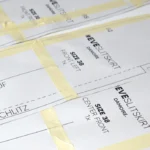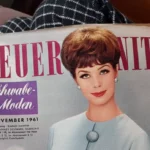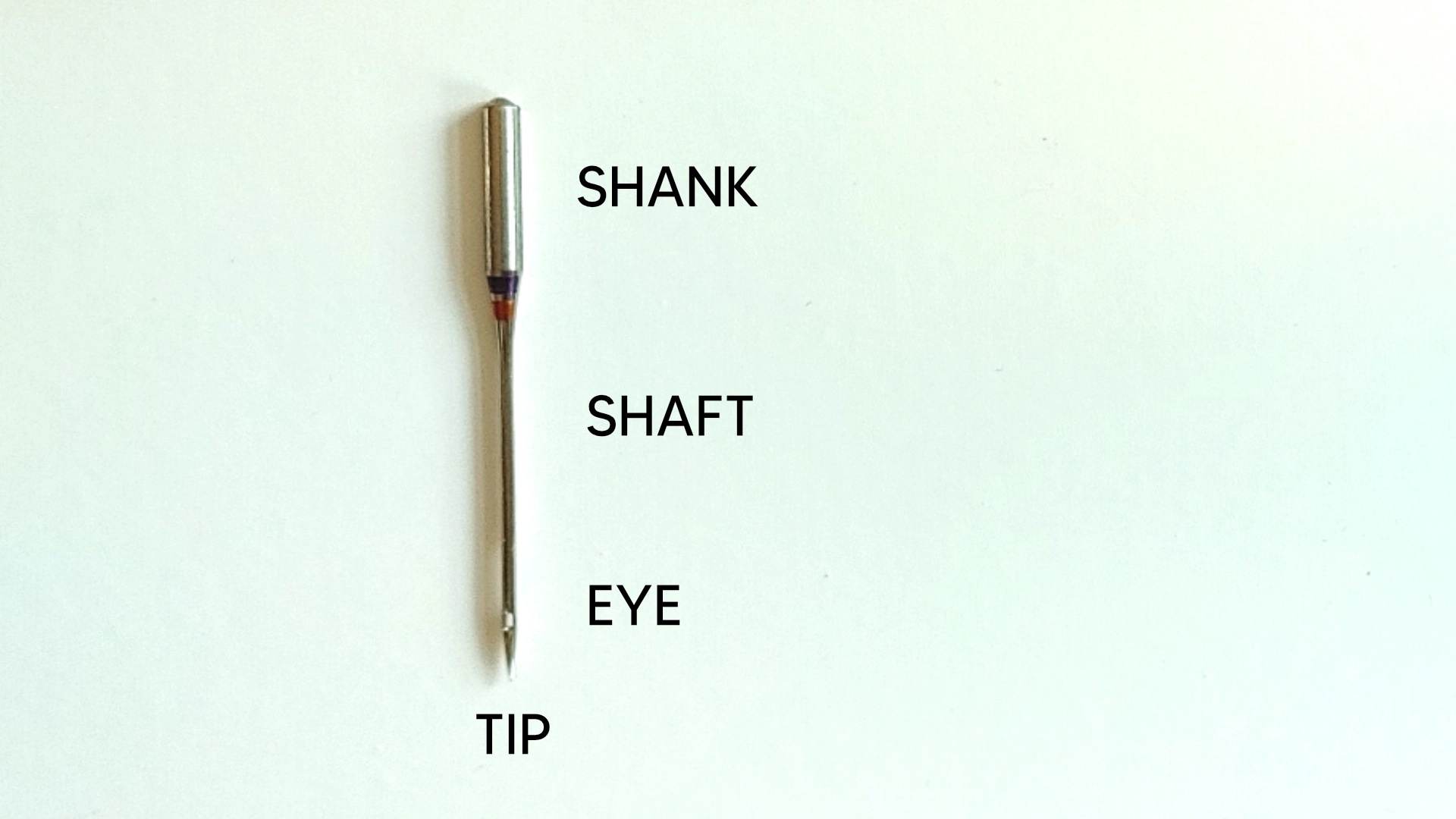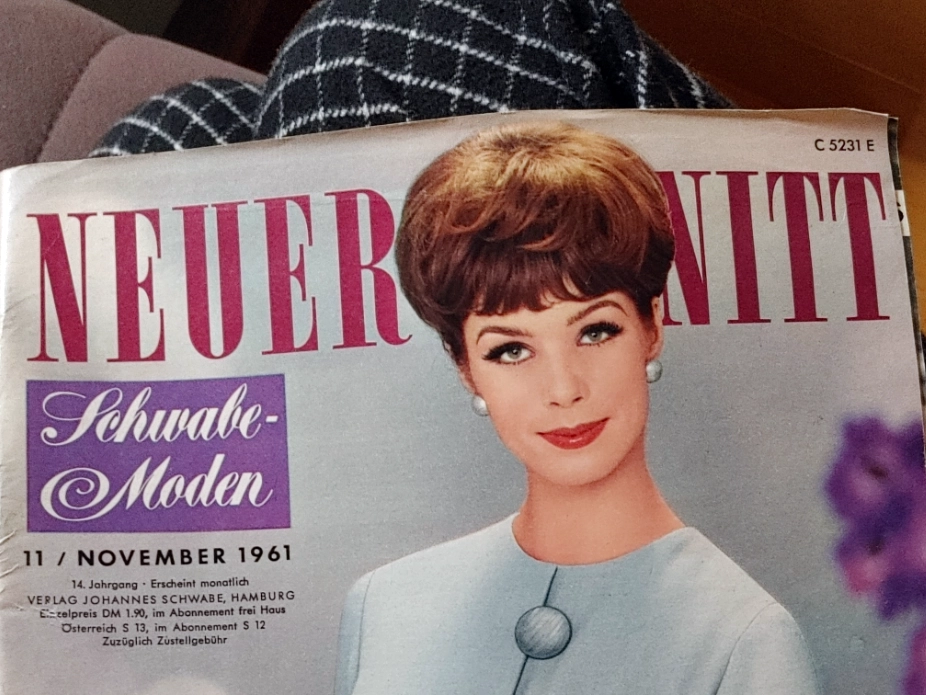
How to read sewing patterns: Beginners guide
12/20/2024
What are the easiest sewing patterns for beginners?
03/06/2025I still remember 13-year-old me finally getting her hands on some jersey fabric and then destroying it, by using a universal sewing machine needle. I left so many tiny holes in my fabric, and I couldn’t understand why.
If you’ve ever experienced skipped stitches, puckered fabric, or broken threads during your sewing session, your sewing machine needle might be the reason. In this guide, I share the different types of sewing machine needles and how to recognize them so that you never end up with destroyed sewing projects.
Sewing machine needles & their key parts
Every sewing machine needle consists of four key components:
- Shank: The top part that fits into your sewing machine. Most household machines use a flat-sided shank, but some older models use a round one.
- Shaft: The main body of the needle determines its size. The size is usually found on the needle's package. The thinner the shaft, the finer the fabric should be.
- Eye: The hole where the thread passes through.
- Point/tip: The point is the part that penetrates the fabric; different points are designed for specific materials and can make or break your project.

What are the most common sewing machine needles?
Universal needles
You’ll most likely already know universal needles because they often get delivered with your sewing machine. Universal needles are perfect for every cotton, linen, or lightweight denim that is non-stretchy.
- Use for: Cotton, polyester blends, linen, lightweight denim, wool
- Recognition: Slightly rounded tip, available in various sizes (70/10 to 90/14)
- Tip: A great all-purpose option for non-stretchy fabrics
Jersey Needles
I would have needed some jersey needles when I was young wanting to sew a simple cotton t-shirt. The tip of a jersey needle has a ball form that prevents the fabric from being damaged. If you experience skipped stitches with a jersey needle, switching to a stretch needle could solve the issue.
- Use for: Knits, jerseys, spandex, stretch fabrics
- Recognition: Rounded tip that glides between fibers instead of piercing them
- Tip: Helps prevent skipped stitches and fabric damage.
Stretch Needles
Stretch needles also have a ballpoint but are slightly sharper to go through very stretchy fabric. If I don’t have a jersey needle to hand, I sometimes use stretch needles as an alternative, note that they pierce your fabric more and could damage jerseys.
- Use for: Lycra, elastic, swimwear, very stretchy fabrics
- Recognition: Medium ballpoint with a special eye and scarf to prevent skipped stitches
- Tip: Use for fabrics with high elasticity to avoid stitch issues.
Microtex Needles
Microtex needles are very sharp and go through finer fabric without leaving any marks behind. I mostly use them for silk or very tightly woven fabrics.
- Use for: Silk, tulle, lightweight cotton, tightly woven fabrics
- Recognition: Very sharp, fine point for precision stitching
- Tip: Ideal for delicate or high-thread-count fabrics.
Jeans/Denim Needles
Denim is a very tough material to sew and you’ll need a sharp needle that doesn’t break easily when sewing multiple layers.
- Use for: Denim, canvas, heavy twill, upholstery fabric
- Recognition: Strong shaft, sharp point, larger eye
- Tip: Use with heavier thread to prevent breakage.
Leather Needles
Leather is a difficult material to sew with and once pierced you’ll always see the needle marks in the material.
- Use for: Leather, faux leather, vinyl
- Recognition: Wedge-shaped tip designed to cut through tough materials
- Tip: Avoid using woven fabrics to prevent excessive damage.
Quilting Needles
If you want to sew multiple layers when quilting and want to needle to go through the different materials more smoothly than a universal needle, a quilting needle is a great option.
- Use for: Quilting cotton, batting, multiple fabric layers
- Recognition: Tapered point designed for piercing layers without damaging them
- Tip: Perfect for precision piecing and free-motion quilting.
Embroidery Needles
If you have an embroidery machine at home, you’ll most likely know embroidery needles with a larger eye to make the embroidery process smooth.
- Use for: Machine embroidery on cotton, polyester, rayon, and specialty embroidery threads
- Recognition: Larger eye to accommodate decorative threads
- Tip: Helps prevent thread breakage and enhances embroidery quality.
Twin & Triple Needles
Twin needles are often used for hemming t-shirts, and you’ll need two bobbins on top of your sewing machine and loosen the tension of the top threads a bit, to ensure that the bottom bobbin creates a zigzag stitch on the back.
- Use for: Decorative stitching, hemming stretch fabrics
- Recognition: Two or three needles attached to one shank
- Tip: Ideal for parallel stitches, commonly used in topstitching and hemming.
What do the colours on sewing machine needles stand for?
Some sewing machine needle brands have colour codes on the shank of the needle. Generally, these colour codes describe the type of needle but might vary depending on your brand.
| Needle Type | Color Code |
|---|---|
| Universal | None or Light Blue |
| Ballpoint (Jersey) | Orange |
| Stretch | Yellow |
| Microtex (Sharp) | Purple |
| Jeans/Denim | Blue |
| Leather | Brown |
| Quilting | Green |
| Embroidery | Red |
| Metallic | Pink |
| Topstitch | Light Green |
What's the right needle size?
Needles are sized with two numbers (e.g., 80/12). The European size (larger number) and American size (smaller number) show the needle’s diameter.
Here is a general rule of thumb:
- 60/8 - 70/10: Fine fabrics like silk or chiffon
- 80/12 - 90/14: Medium-weight fabrics like cotton or linen
- 100/16 - 110/18: Heavy fabrics like denim and upholstery fabric
What are signs that you need to change your needle?
Even with the correct needle, it's important to change it regularly.
Look for these signs:
- Skipped stitches
- Puckered fabric
- Snags or holes in the fabric
- A popping sound when the needle penetrates the material
- Visible bends or damage to the needle tip



